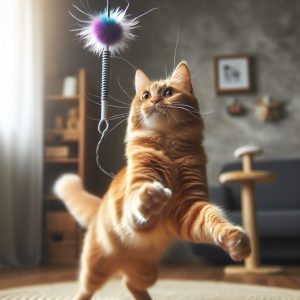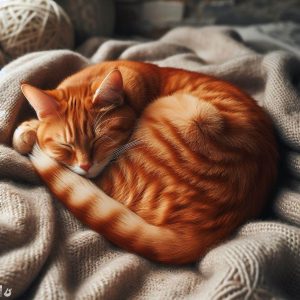Has your feline friend been bouncing off the walls lately? A hyperactive cat can be stressful and tiring to deal with. As a cat owner, you want your fur baby to be happy, healthy, and relaxed. The good news is there are many tips and techniques you can use to calm down a hyper cat.
Understanding Hyperactive Cat Behavior
A hyperactive cat may exhibit behaviors like:
- Constantly running, jumping, and climbing
- Restlessness and inability to settle down
- Destructive scratching or biting
- Excessive meowing or vocalizing
- Aggressive play and attacking
Hyperactivity is often normal in kittens and younger cats. But it can become problematic in adult cats for various reasons:
- Lack of stimulation – If your cat is bored and underexercised, they may act out hyperactively seeking attention and activity.
- Stress – Changes in environment, routine, owners, other pets, etc can cause anxiety leading to hyper behavior.
- Lack of routine – Cats thrive on structure and can get hyper without set feeding, playing, and sleeping schedules.
- Health issues – Conditions like hyperthyroidism, food allergies, fleas, arthritis, etc. can manifest in restlessness.
- Too much stimulus – Lots of noise, smells, sights, people or other pets may overstimulate your cat.
So in order to calm your hyper cat, you’ll need to identify and address the underlying causes first. Let’s explore some solutions:
Provide Plenty of Exercise and Playtime
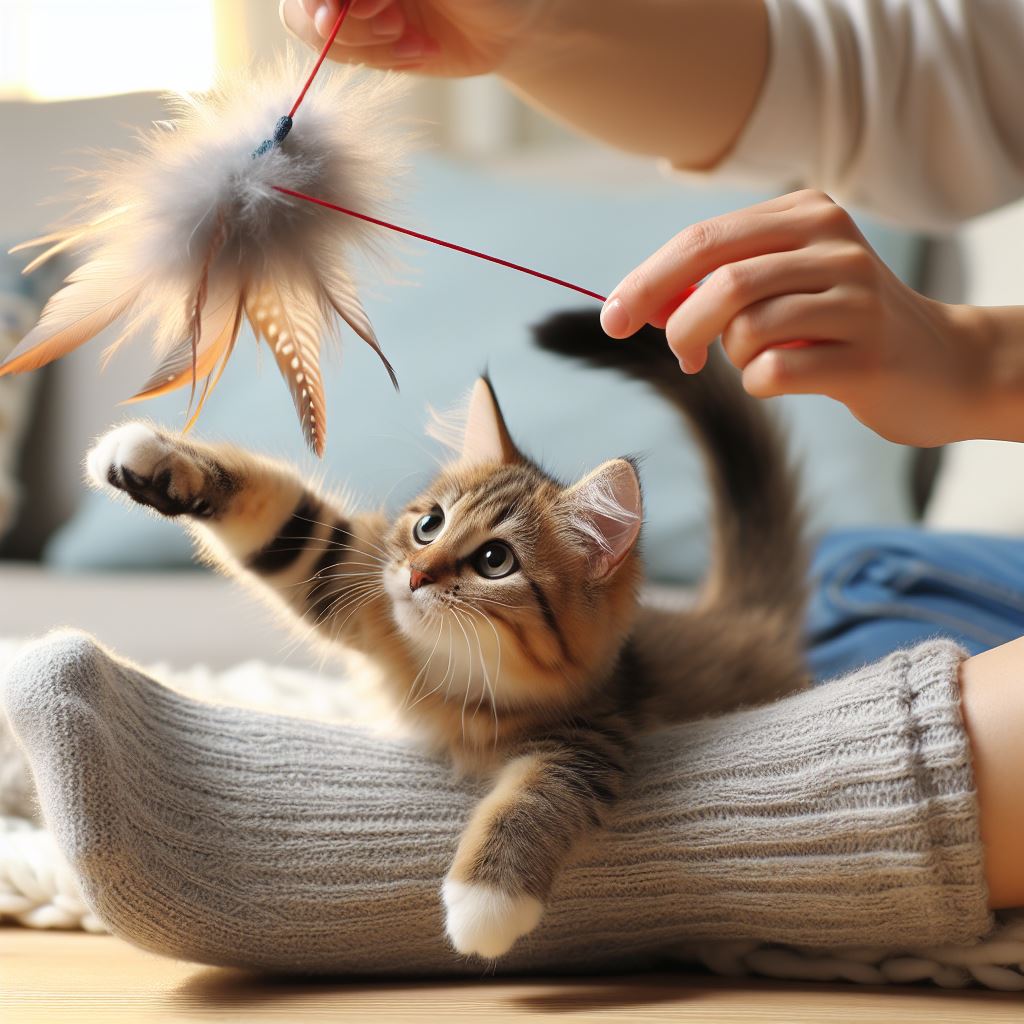
One of the best ways to calm a restless cat is by providing adequate physical activity and playtime. Indoor cats especially need regular exercise to expend energy and prevent boredom.
Play with interactive toys like wands, balls, and laser pointers to get your cat running and jumping. Have at least two 15-minute play sessions per day. Cats also enjoy playing chase, so have them chase safe objects like balls of tin foil.
Provide appropriate cat trees, scratching posts, and climbing structures to satisfy their natural climbing instinct. Make sure your cat has places to perch up high to survey their territory.
Consider getting a second cat as a playmate if possible. Cats often enjoy having a feline companion to wrestle, chase, and play with. This can help redirect hyper energy away from you.
Take your cat outside on a leash or catio for safe exploration and extra activity. Watching outdoor birds and smells provides mental stimulation too.
Invest in interactive feeding puzzles and boards to make your cat work for their food. This provides both mental and physical exertion.
Maintain a Routine and Structure
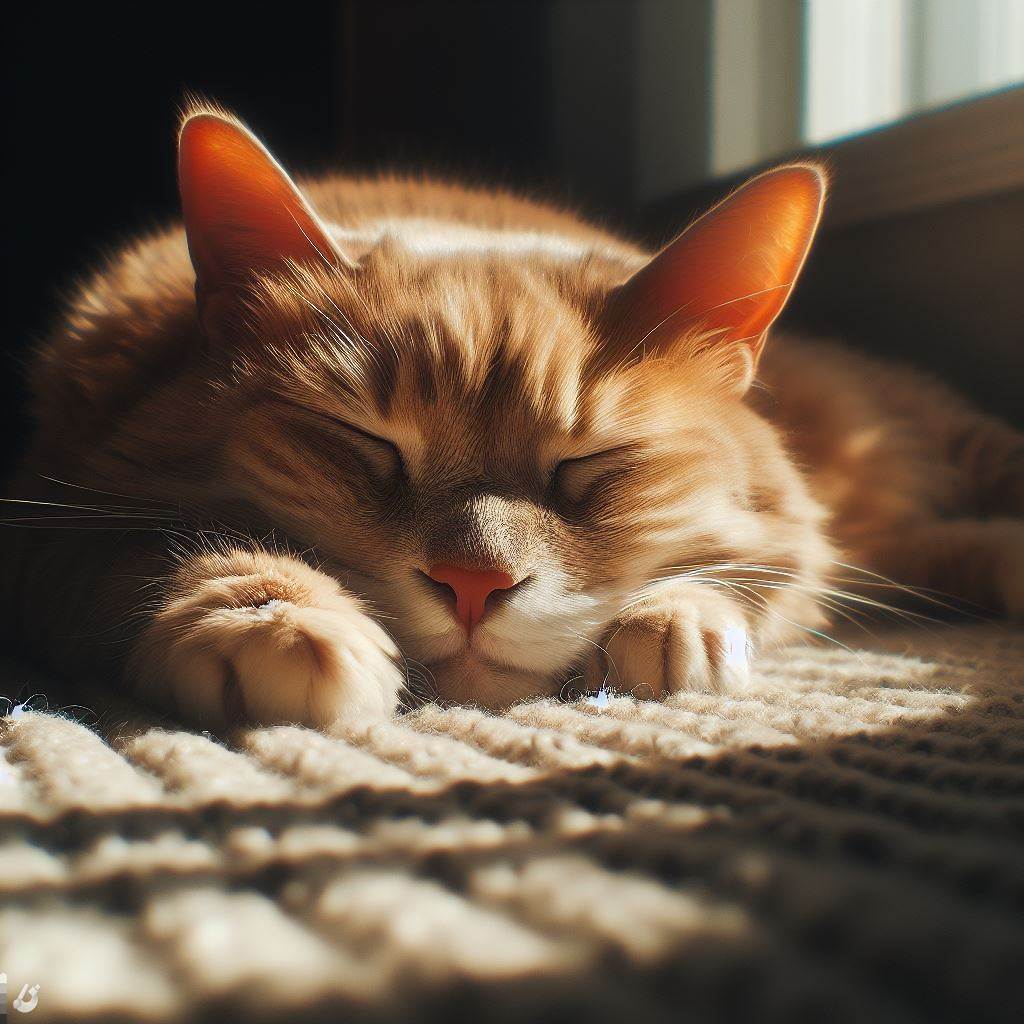
Cats feel more calm and secure when they have a predictable routine they can rely on. Aim to stick to a regular schedule for all your cat’s needs:
- Feeding times – Feed wet food/kibble at the same times each morning and evening.
- Play sessions – Have set playtimes before meals for added routine.
- Sleep times – Ensure your cat gets adequate undisturbed daytime naps and nighttime sleep.
- Potty breaks – Scoop litter at consistent times and use calming litter aids like Cat Attract.
- Grooming – Brush and handle paws daily so grooming stays relaxing.
- Ignore wild behavior – Refrain from giving attention to hyperactivity so your cat learns it won’t get rewarded.
You can also use calming pheromone diffusers like Feliway to promote your cat feeling comfortable.
Create a Stress-Free Environment
Look at environmental stressors that could be causing anxiety and hyperactivity in your cat. Try to minimize loud noises, household chaos, changes, conflict with other pets, etc.
Make sure your cat has safe retreats in each room like cat trees, boxes, and hiding spots. Place food, water, and litter in quiet low-traffic areas.
Use calming aids like calming collars, calming treats, calming music, or TV shows to help soothe your cat in stressful situations. Talk or play soothingly with your cat when they seem overwhelmed.
Limit major changes as much as possible and make adjustments gradually if needed. For example, slowly introduce a new pet or family member so your cat can adjust.
Provide stable cat furniture, toys, and scents in every environment like boarding or vet visits so your cat feels more secure.
If you have multiple cats, provide duplicate resources like food bowls, beds, litter boxes, and scratchers to prevent conflicts.
Rule Out Underlying Medical Issues
Sometimes hyperactivity can stem from an underlying medical condition causing discomfort, irritation, or anxiety.
Watch for other symptoms like increased thirst/urination, weight loss, appetite changes, vomiting, poor coat condition.
Take your cat to the vet for a wellness exam. The vet can check for issues like:
- Dental disease
- Arthritis
- Hyperthyroidism
- Food allergies
- Flea or skin problems
- Urinary tract infections
- Cognitive dysfunction syndrome
Treating conditions that may be causing pain or distress is key to calming your cat long-term. Discuss behavior changes with your vet as well.
Use Calming Nutritional Supplements
Certain vitamins, herbs, and nutraceuticals can help relax your hyperactive cat when used properly. Always consult your vet before giving supplements. Some options include:
- Omega-3 fatty acids – Found in fish oil, they help reduce inflammation and support brain function.
- L-theanine – An amino acid that increases serotonin and dopamine to boost relaxation without drowsiness.
- Chamomile – This herb has a gentle calming effect. Give chamomile tea or capsules.
- Valerian – May induce sleepiness, so best for nighttime. Don’t use long-term.
- Tryptophan – This amino acid precursor to serotonin elevates mood. Found in turkey and other proteins.
- CBD Oil – Non-psychoactive hemp oil may reduce anxiety, but research is still limited.
Follow dosage instructions carefully and monitor the effects. Combining supplements, herbs, and medications can be risky.
Use Pheromones and Aromatherapy
Certain scents can help induce calmness in stressed cats. Some options include:
- Feliway – This synthetic pheromone mimics cat face pheromones to promote relaxation. Use diffusers by wall outlets.
- Catnip – This minty herb induces happiness in many cats. Grow catnip or use cat toys filled with dried catnip.
- Lavender – The soothing lavender aroma can mellow hyperactivity. Use lavender essential oils or dried lavender.
- Valerian – As a supplement or in cat toys, valerian scent has sedative effects.
Caution: Essential oils can be toxic to cats when applied topically. Always dilute oils and use them safely under guidance. Use common sense – if a scent seems to stress your cat, stop using it.
Consider Medication If Needed
For severe hyperactivity that doesn’t respond to other methods, prescription medication may be warranted short-term. Your vet can prescribe:
- Anti-anxiety medication – For temporary situational stressors like travel or vet visits. Such as alprazolam or buspirone.
- Antidepressants – For long-term anxiety issues. Such as Prozac and clomipramine which boost serotonin.
- Blood pressure medication – For cognitive dysfunction syndrome to improve brain perfusion. Such as amlodipine.
- Supplements – Prescription medications like Gabapentin or amitriptyline may be an alternative to traditional anxiety meds.
Only give medication under your vet’s guidance, and be cautious with side effects. Natural methods should be explored first.
Use Training Techniques
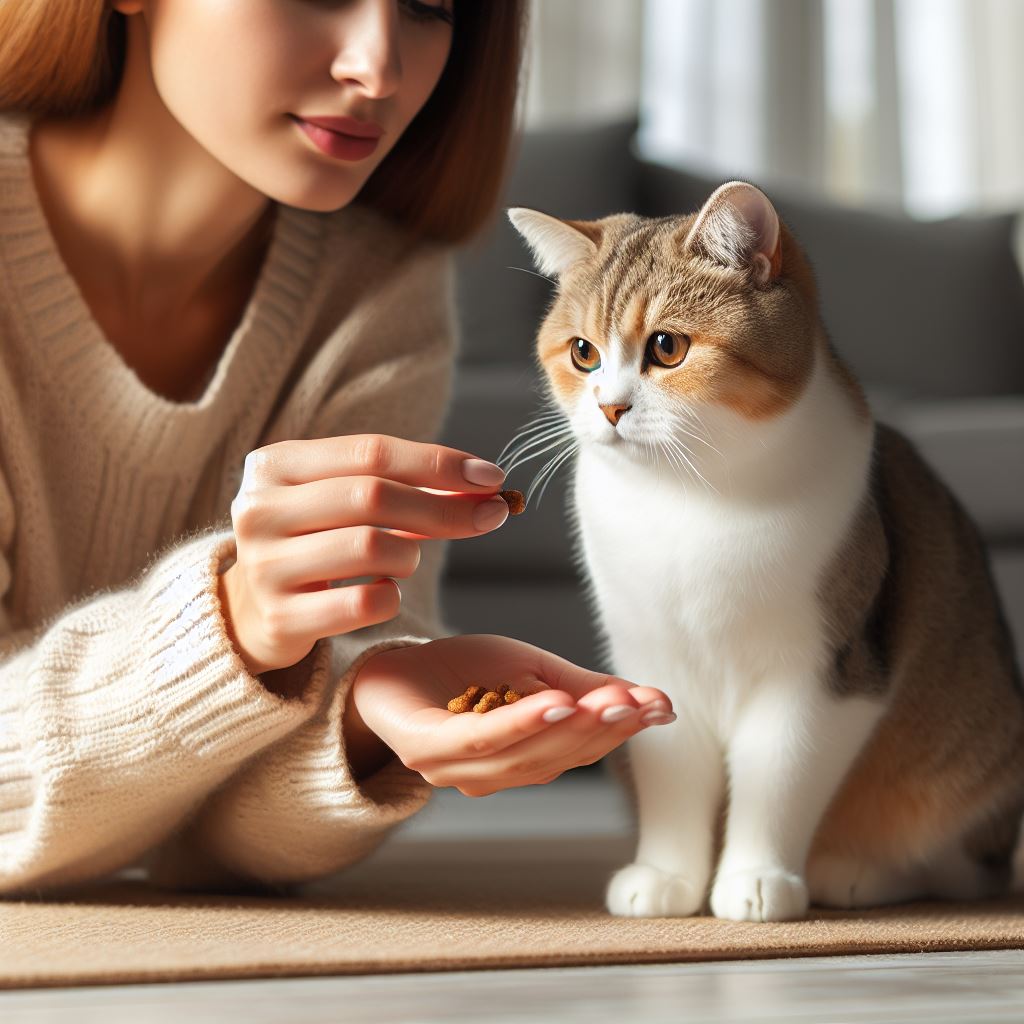
With positive reinforcement training, you can teach your cat more appropriate behaviors to replace hyperactivity:
Redirect their energy – Get their attention with toys when hyper and teach them to run to toys on command. Reward calmness after play.
Train with clickers – Use clickers to mark and reward calm moments, and intervals of rest, and do tricks/commands like sit and stay.
Harness energy – Teach feats like fetch, obstacle courses, and leash walking so they can burn energy in positive ways.
Set boundaries – Use deterrents or correction sounds to discourage hyper behaviors like biting or destructive scratching.
Know triggers – Observe when hyperactivity occurs and neutralize triggers. Close blinds if you see outdoor animals, etc.
Stay patient, keep sessions short and end on a good note, and phase out treats with praise. A tired, mentally stimulated cat is a calm cat.
Provide Proper Outlets for Natural Behavior
It’s important to provide appropriate outlets for your cat’s natural instincts like:
- Scratching – Place scratching posts around the home and praise use. Consider cat-friendly nail caps to deter damaging furniture scratching.
- Hunting – Use interactive wand toys and puzzle feeders to satisfy their prey drive in a positive way.
- Perching – Ensure access to tall cat trees, shelves, and window perches to fulfill climbing and surveying instincts.
- Chewing – Provide safe chew toys and cat grass to nibble. This prevents them from chewing household items.
- Digging – Let your cat enjoy digging in cat-safe planting dirt or hiding treats in paper bags.
- Rubbing – Give your cat soft blankets, rugs, and access to catnip.
Satisfying these innate needs in the proper way will help prevent destructive hyperactivity. Play, exercise, and affection from you also help fulfill social needs.
Ask Your Vet About Proper Diet
Diet can factor into hyperactivity as well. Ask your vet about an optimal diet to avoid:
- Food allergies – Allergies to proteins like chicken can cause itchiness and anxiety. Try a hydrolyzed or novel protein diet.
- Junk carbohydrates – Sugary treats can cause blood sugar spikes and hyperactivity. Feed high protein, low carb wet food.
- Artificial additives – Preservatives, colorings and flavors may induce hyperactivity. Choose natural preservative-free foods.
- Not enough protein – Cats need lots of protein. Low protein diets have more carbs that may cause excitability.
- Overfeeding – Obesity stresses joints and the heart. Feed portion-controlled meals in slow-feed bowls.
A high protein, low carb wet food diet with scheduled portion-controlled feedings can lead to a calmer lifestyle.
Be Patient and Consistent
Remember that permanently modifying hyperactive behavior takes time and patience! Stick to scheduled routines, find healthy outlets for energy, rule out medical causes, and use calming aids consistently.
Pay attention and track when hyperactivity occurs and what calms your individual cat. Consistency is key – the more steady the routine, the lower your cat’s stress levels will be.
With time, your cat can learn calm and relaxed habits. But never punish hyperactivity – only reward positive calm behavior. If problems persist, discuss medication options with your vet.
Frequently Asked Questions
How long does it take for a hyper cat to calm down?
With consistent training, exercise, routine, and calming techniques, most cats show some improvement in behavior within 4-6 weeks. However, permanently resolving hyperactivity often takes 3 months or more of dedication. Kittens and younger cats may take longer to mature.
Is my cat’s hyperactivity normal?
Occasional “zoomies” and playful energy are normal for any healthy cat. But excessive or destructive hyperactivity to the point it’s disruptive indicates an underlying issue that needs to be addressed. Check with your vet.
When do I need medication for my hypercat?
Start with natural methods first for a few weeks or months. If hyperactivity remains severe despite your best efforts, prescription anti-anxiety or antidepressant medication may be needed short-term to help extinguish unwanted behaviors while training.
Final Tips
In closing, here are some final tips for dealing with a hyper cat:
- Engage your cat’s brain and body daily with interactive play, training games, and exploration. A tired cat is a good cat!
- Try different calming aids and see what works best for your individual cat – pheromones, toys, treats, herbs, etc.
- Rule out pain, allergies, litter box issues, or other problems that could be causing anxiety with a vet visit.
- Be vigilant but patient. Permanently modifying behavior takes consistency and time.
- Focus on rewarding calm habits, not punishing hyperactivity. Use deterrents only for destruction.
With the right mix of patience, routine, training, calming aids, exercise, and environmental adjustments, you can help your hyperactive cat chill out and prevent future problems. Maintain realistic expectations, and consult both your vet and a cat behaviorist if issues persist. With time and love, your energetic feline will settle down into a calmer, happier cat.

